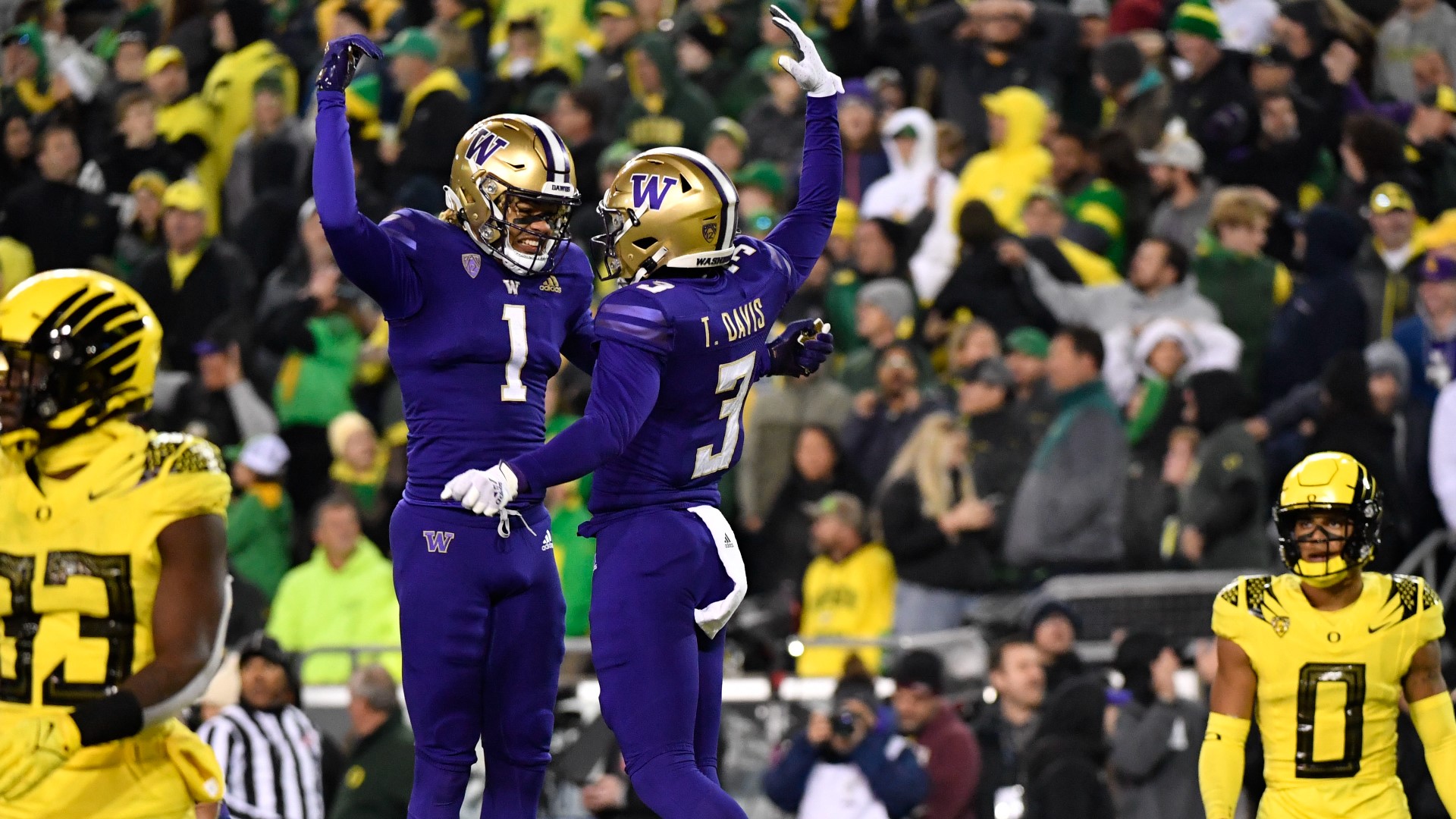SEATTLE — The University of Washington and the University of Oregon both announced Friday they will join the Big Ten Conference.
The Big Ten Conference voted Friday to accept the two universities effective in August of 2024.
"The Big Ten is a thriving conference with strong athletic and academic traditions, and we are excited and confident about competing at the highest level on a national stage," UW President Ana Mari Cauce said. "My top priority must be to do what is best for our student-athletes and our University, and this move will help ensure a strong future for our athletics program."
This continues the likely dismantling of the Pac-12 Conference, which already was down to nine schools after UCLA and USC both announced moves to the Big Ten last year and Colorado announced a move to the Big 12 Conference.
The Big Ten will stand at 18 members with Washington and Oregon both officially joining the conference, making it the largest in the NCAA.
The Action Network's Brett McMurphy reported Friday morning citing sources that the conference could add even more teams, as it is considering admitting Pac-12 schools California and Stanford.
Conference realignment has become the most notable story within college sports in recent years, as media contracts continue to grow and regional positioning along with historical rivalries have taken a back seat.
Washington originally joined what was then known as the Pacific Coast Conference in 1915, along with charter members California, Oregon and Oregon Agricultural College (which later became Oregon State).
The footprint of UW Athletics would become much more national if it begins competing across the board in the Big Ten. The conference's current membership covers exclusively the Midwest and Mid-Atlantic regions.
Why is UW leaving the Pac-12?
Money is a big factor.
The Pac-12's proposed deal with Apple TV is estimated to bring in $20 to $25 million per school per year, but that's based on subscriptions.
Both the Huskies and Ducks are expected to take a 50% cut of what the Big Ten schools make, which would be in the $35 million range, going up incrementally until a new deal goes into place in 2030.
Some questions remain, including is that enough money for Washington to pay for all the extra travel and missed days of school for its athletes. Is it enough to pay off the loan that financed the Husky stadium renovations? Those payments are $9.8 million per year through 2025. Then they increase to $17.7 million per year, and that's with the athletic department starting this season with a projected $7.8 million deficit.
The Pac-12 released a statement on Friday that read:
"Today's news is incredibly disappointing for student-athletes, fans, alumni and staff of the Pac-12 who cherish the over 100-year history, tradition and rivalries of the Conference of Champions. We remain focused on securing the best possible future for each of our member universities."
So, what happens to the Apple Cup?
It is unclear where this news would leave Washington State and Oregon State. WSU athletic director Pat Chun released a statement Friday afternoon, indicating that the Cougars were "working diligently to determine what is next."
Gov. Jay Inslee also weighed in Friday, saying it is his "understanding and expectation that the University of Washington remains committed to permanently continuing the Apple Cup with Washington State University, one of our state’s greatest traditions and a prime example of how regional rivalries make college sports so special.”
When UCLA announced its decision to leave the Pac-12 and left fellow UC school Cal behind, it was forced by the state to pay a portion of its newfound athletic revenue to Cal.
As the Pac-12 appears to be imploding, expect to hear a lot more news on this front in the coming days and weeks.

